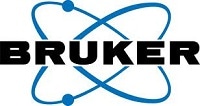It has been found that the mechanical properties of small volumes significantly differ from those of bulk volumes for a wide variety of materials. Several methods are available for increasing the strength in bulk materials, including work hardening and decreasing the grain size (Hall-Petch).
However, this is contrary to the two elementary mechanisms that have been postulated as potential sources for the size-dependent strengthening in free-standing micro and nanostructures. Here, source truncation can be described as a size limitation of the Frank-Read dislocation source, where only one pinning point operates as a spiral dislocation source. In addition, the stress required for the spiral source to operate relies on the proximity of the source to the surface. Increased energy is required for the spiral sources closer to the surface to activate because increased curvature is required for the emitted dislocation.
The second mechanism, the escape of dislocations to the material surface has been termed as a starvation/ exhaustion mechanism, lowering the number of available dislocation sources. This phenomenon of decreasing dislocation density has been called mechanical annealing, because of the dislocation density reduction accomplished through thermal annealing in bulk samples. The Hysitron® PI 95 TEM PicoIndenter® was used to investigate both mechanisms in copper specimens.
.jpg)
Figure 1. - Transmission electron micrographs showing FIB-milled copper dogbone specimens and custom gripper.
Direct-Pull Technique
The Hysitron PI 95 provides two methods for uniaxial tensile testing. In the first method, described here, the transducer is actuated in the reverse direction to apply tension directly to a specimen.
This method, referred to as “direct-pull”, is elegant but needs a gripping mechanism to connect the sample to the instrument, such as the dogbone specimens shown in Figure 1. An optional Push-to-Pull (PTP) MEMS device is used in the second method and is described elsewhere.
.jpg)
Figure 2. - Yield stress versus size for nanotensile, nanocompression, and microtensile tests on copper in single slip (234) and multiple slip (100) orientations.
.jpg)
Figure 3. - Dark field TEM images showing spiral dislocations in 142 nm diameter (234) copper.
Experimental Setup
Using Focused Ion Beam (FIB) milling, copper (100) and (234) single crystal dogbone specimens were prepared with minimum gauge dimensions ranging between 128 nm and 190 nm. As shown in Figure 1, the gripper, designed as a counterpart to the dogbone shape, was milled through FIB from doped diamond. Both the gripper and sample were milled with Ga+ ions at 30 keV with a final milling current of 10 pA, with a Pt coating applied to reduce FIB damage.
After fabrication, the sample and gripper were mounted onto the Hysitron PI 95 TEM PicoIndenter and interfaced with a JEOL 3010 TEM. Then, the gripper was maneuvered into place around the dogbone specimen and this was followed by applying a strain rate of ~5 x 10-3 s-1 through a displacement-controlled mode.
True strain and stress were established through a combination of the load/displacement data and actual sample dimensions calculated from the recorded TEM video. The first large dislocation avalanche was used to determine the yield stress. For different crystal orientations and sample sizes, the measurement was repeated and the yield stress was plotted as a function of diameter and finally compared with the results of earlier microtensile and nanocompression tests (Figure 2).
Dislocation Mechanisms
With regard to the single-slip (234) oriented system, spiral dislocations formed and bowed out during the elastic loading. As shown in Figure 3, these dislocations were then pinned until the onset of plastic loading, in which dislocations spiraled out of the source and piled up against other pinning points. The source was ultimately shut down as the dislocation back stress increased. When the Hysitron PI 95 TEM PicoIndenter applied more load, higher energy sources were activated, resulting in huge bursts of dislocations and the formation of a slip step on the surface.
Besides single uniaxial testing, the multiple slip, (100) oriented sample was cyclically loaded to study the stress strain behavior as shown in Figure 4. The initial high dislocation density of 5.6±0.3x1014/m-2 comprised of surface dislocation loops from the FIB fabrication as well as internal dislocations.
It was seen that this dislocation density decreased by an order of magnitude during the course of six uniaxial cycles. This happened with a corresponding increase in yield stress from 636 MPa to >2 GPa, demonstrating that a reduction in the dislocation density resulted in hardening, substantiating a source exhaustion mechanism for increased yield strength.
.jpg)
Figure 4. - True stress versus true strain for cyclical loading of 133 nm (100) copper. Dislocation density is also estimated and plotted.
Conclusion
Direct-pull tensile tests on copper dogbone specimens were carried out using the Hysitron PI 95 TEM PicoIndenter. It was observed that both truncation and exhaustion mechanisms contributed to the deformation of the copper specimens.
The combination of quantitative stress/ strain measurements with high-resolution TEM imaging has facilitated the study of the dislocation mechanisms that are essential to nanoscale plasticity.
Acknowledgements
Sourced from Source Truncation and Exhaustion: Insights from Quantitative in situ TEM Tensile Testing, D. Kiener and A. M. Minor, Nano Letters, 2011, 11 (9), pp 3816-3820; DOI: 10.1021/nl201890s.

This information has been sourced, reviewed and adapted from materials provided by Bruker Nano Surfaces.
For more information on this source, please visit Bruker Nano Surfaces.